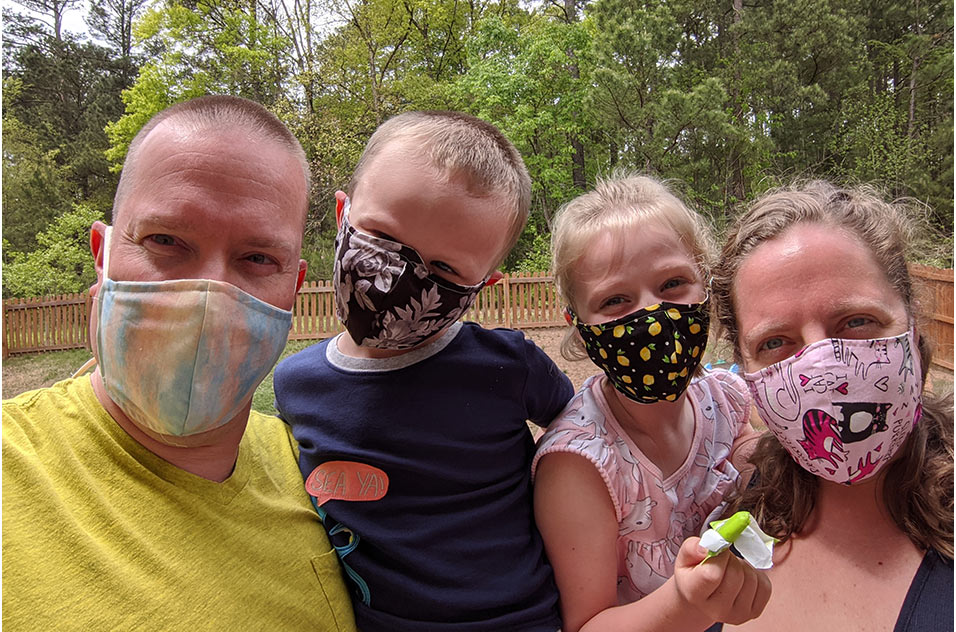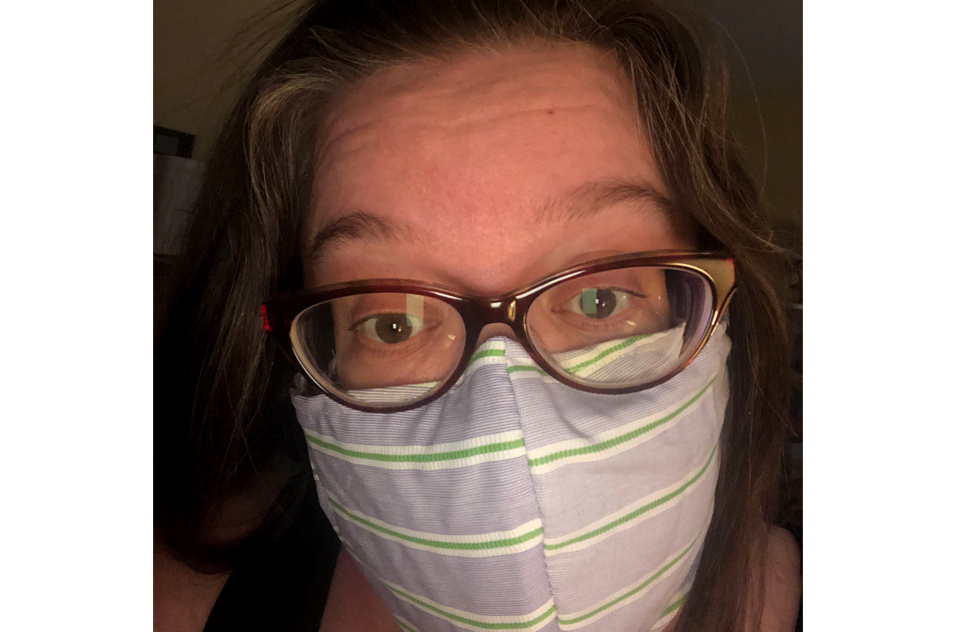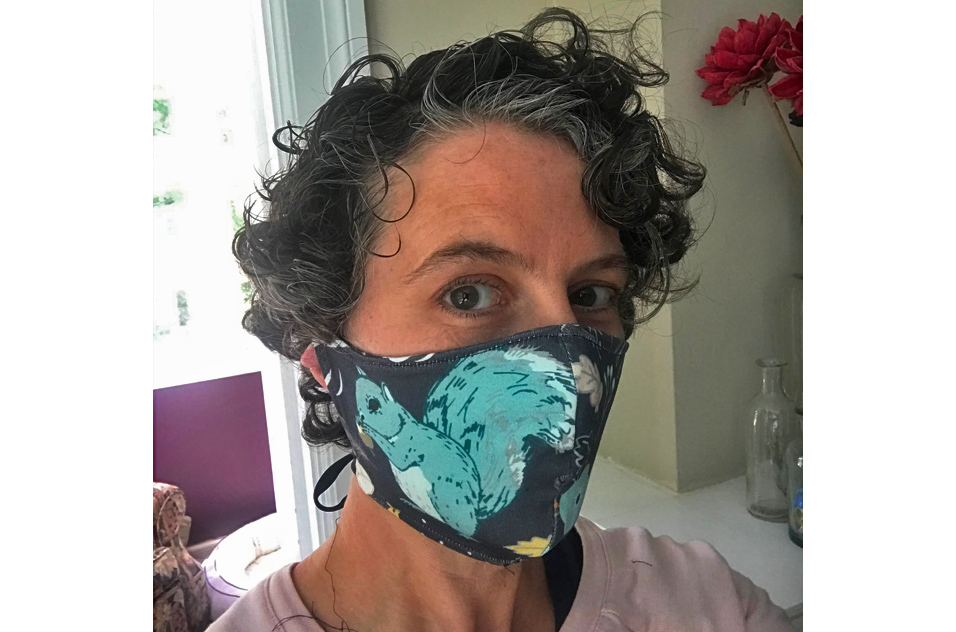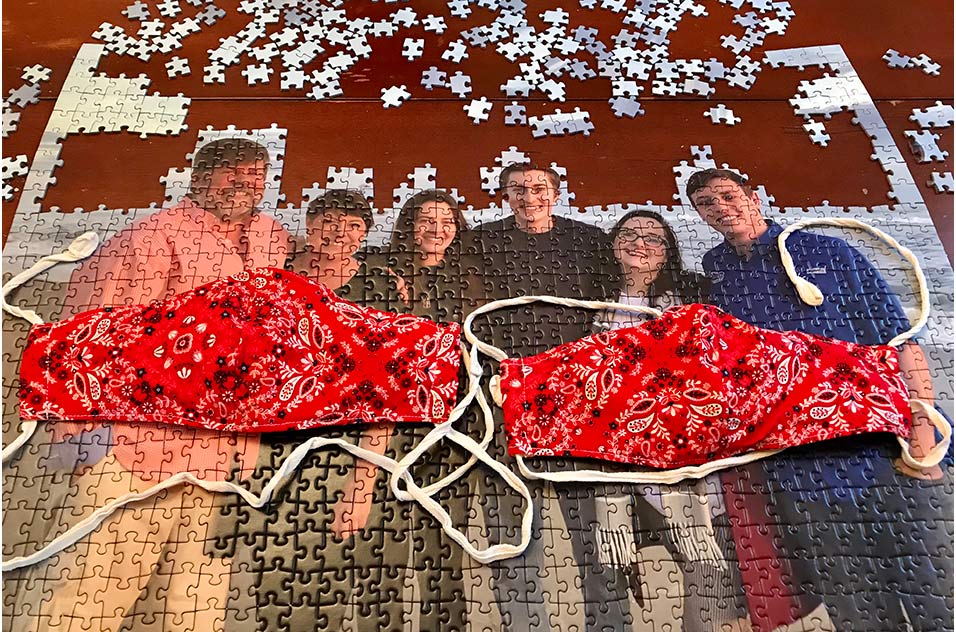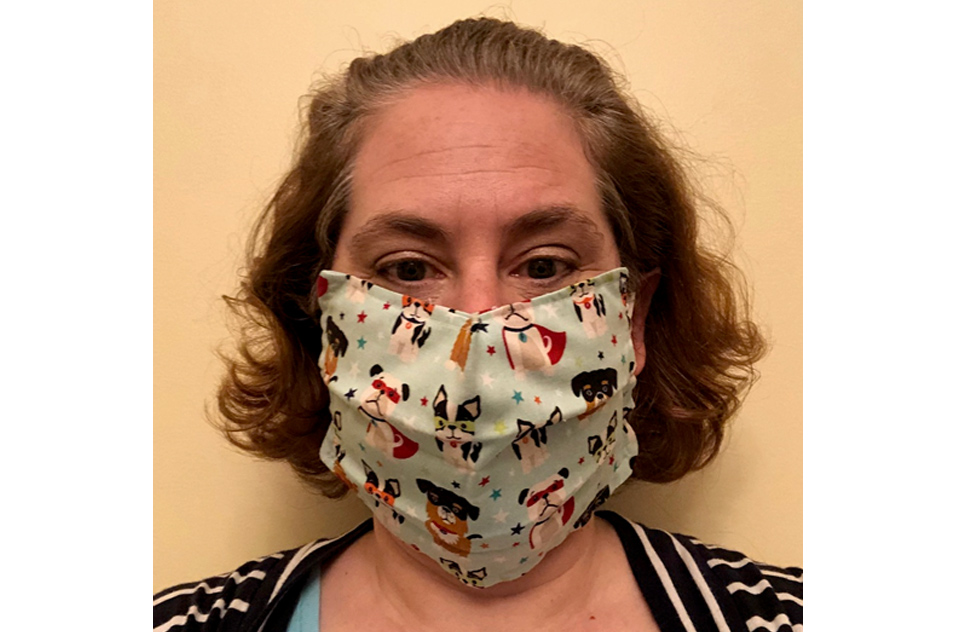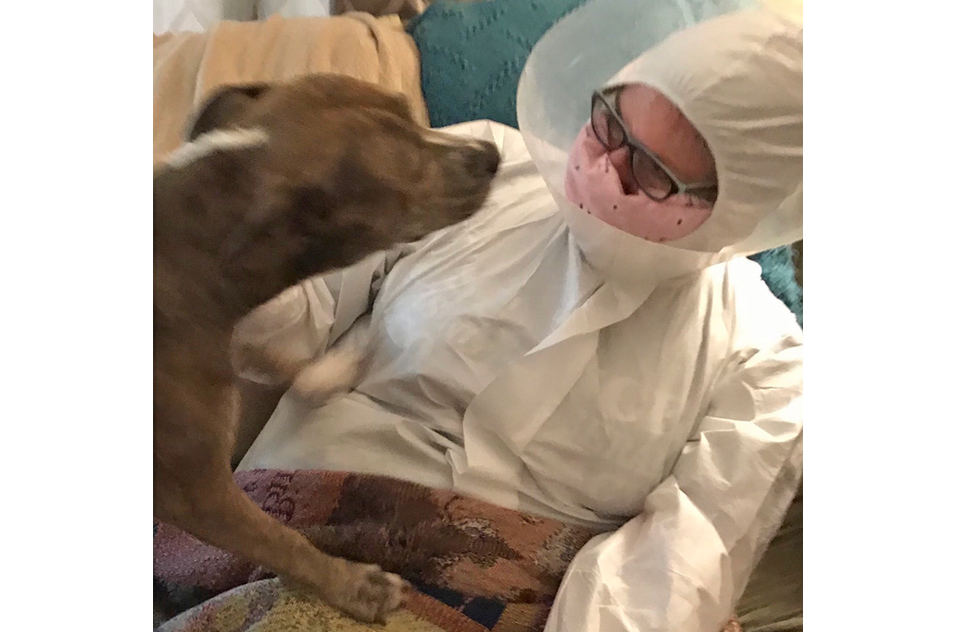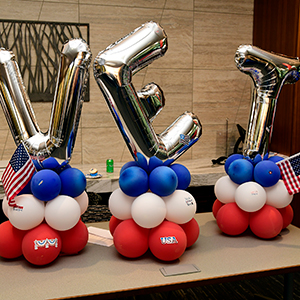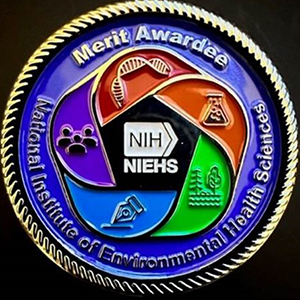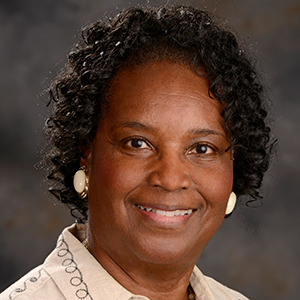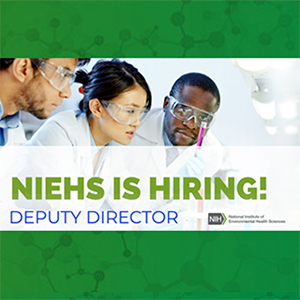 “Is it a French chef, an Italian pizza man, or evil genius?” asked Young. “Whatever brings you that moment of happiness. Don’t let dark times steal your joy!” (Photo courtesy of Travis Young)
“Is it a French chef, an Italian pizza man, or evil genius?” asked Young. “Whatever brings you that moment of happiness. Don’t let dark times steal your joy!” (Photo courtesy of Travis Young)Like many workplaces, NIEHS is turning to innovative ways to keep staff connected while working from home. In May, the Administrative Services and Analysis Branch sponsored a mask contest that received 36 entries.
A winning smile
First place went to the reversible mask by Travis Young of the Comparative Medicine Branch. “My cousin Charlie Gaul is the talented designer of this mask and yes, the mustache is reversible,” Young said. Their goal was to make folks smile, he explained.
“The idea for the contest came from our institute’s leadership team” said contest organizer Ed Kang, from the Administrative Services and Analysis Branch.
“As an organization whose mission includes disease prevention, the contest was a way to creatively showcase best practices for the community we serve. Plus, getting staff engaged despite our physical distance has been hugely important during this crisis.”
The contest received three dozen submissions, and about 300 NIEHS-ers voted for their favorites. Kang said he heard many comments about people getting together in groups — virtually, of course — to enjoy the photos together.
Keep your distance
Second place winner and biostatistician Clarice Weinberg, Ph.D., was inspired by nine-year-old Alex.
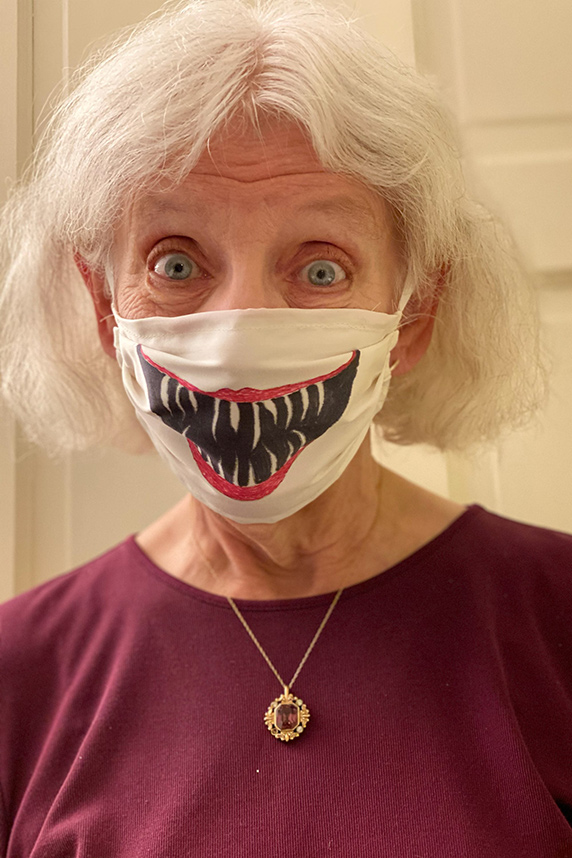 “I have not made a second one like that and I do not recommend it,” she said. “Breathing through a thick layer of permanent marker is frankly both challenging and icky.” (Photo courtesy of Clare Weinberg)
“I have not made a second one like that and I do not recommend it,” she said. “Breathing through a thick layer of permanent marker is frankly both challenging and icky.” (Photo courtesy of Clare Weinberg)“He helped me with the toothy evil clown smile,” she said. “We figured that a scary smile like that could help promote social distancing.”
Weinberg started making masks when a fabric store gave out free kits. “I made 40 or 50 of them, distributing to friends, family, and Memorial Hospital in Chapel Hill, where my daughter works,” she said. “When the NIEHS PPE [personal protective equipment] contest was announced, I thought I’d try entering.”
Strengthening communication
Gary Bird, Ph.D., from the Signal Transduction Laboratory, took Third Place with The Emoji Mask, which lets the wearer share emotions that might otherwise be obscured by the protective fabric.
“Select and display your emotion, while your mouth is safely covered! All emotion settings fully upgradeable,” he wrote.
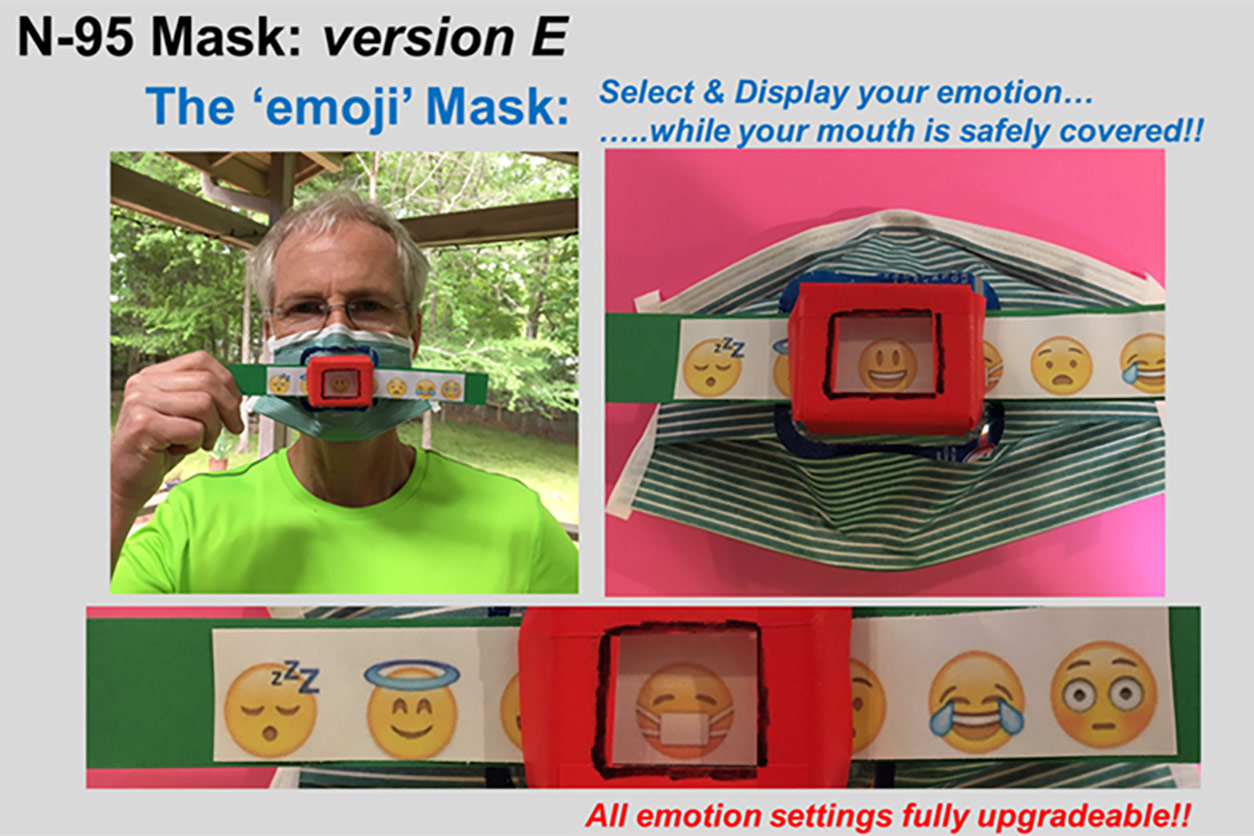 Bird quipped that further production of the N-95: version E, as he dubbed it, is pending authorization under the Defense Production Act. (Photo courtesy of Gillian Bird)
Bird quipped that further production of the N-95: version E, as he dubbed it, is pending authorization under the Defense Production Act. (Photo courtesy of Gillian Bird)Many more
Contestants took the opportunity to have fun with the contest. The entries shown in the slideshow below represent just a sampling of the humor and ingenuity displayed by folks from around the institute.
Many went on to make masks for others, whether friends, family, service workers, or strangers — through donations to local organizations.





